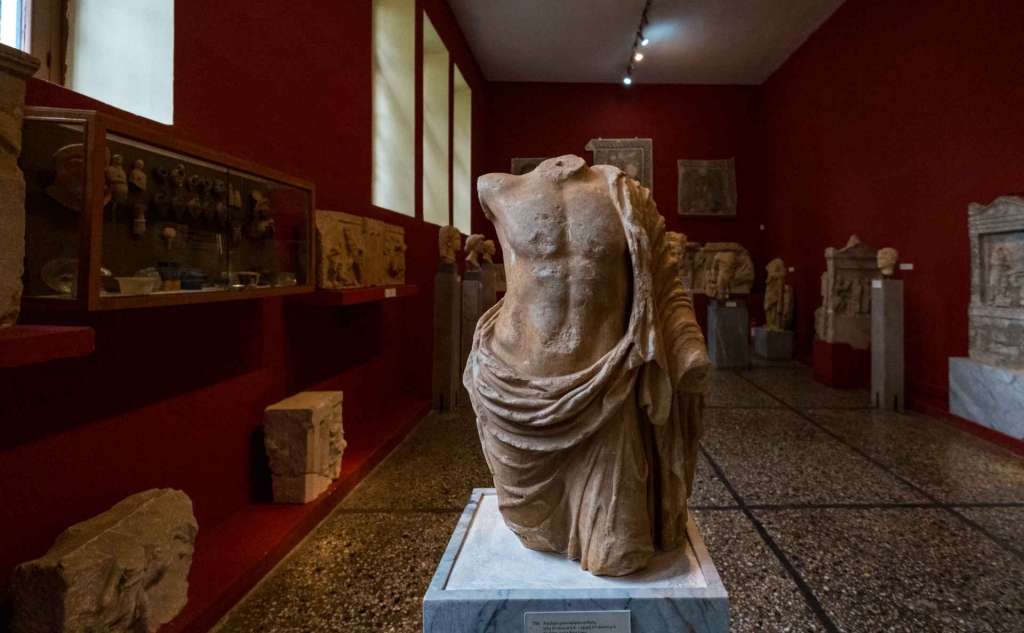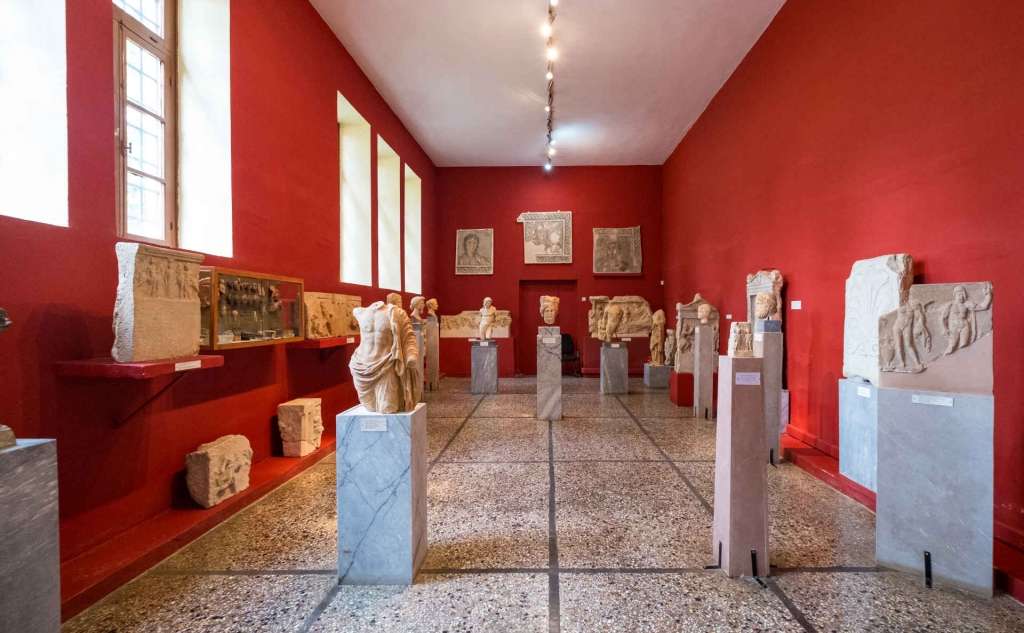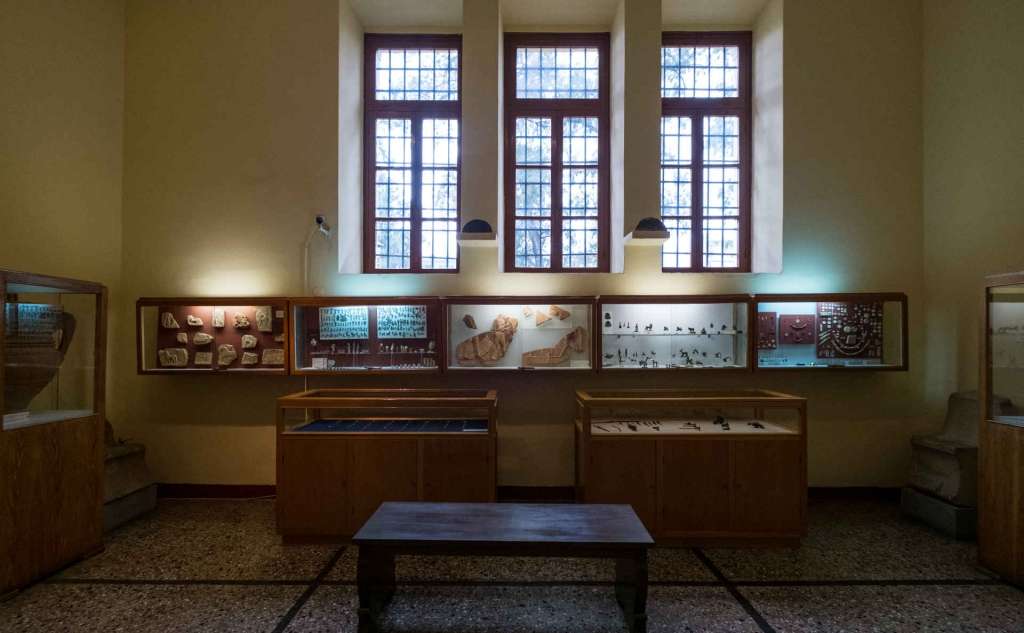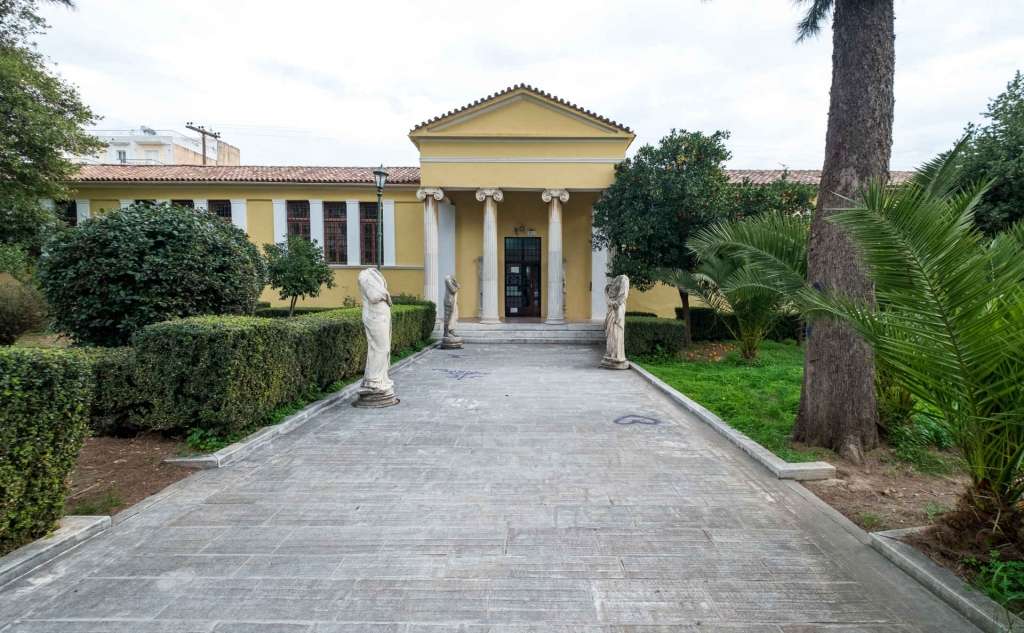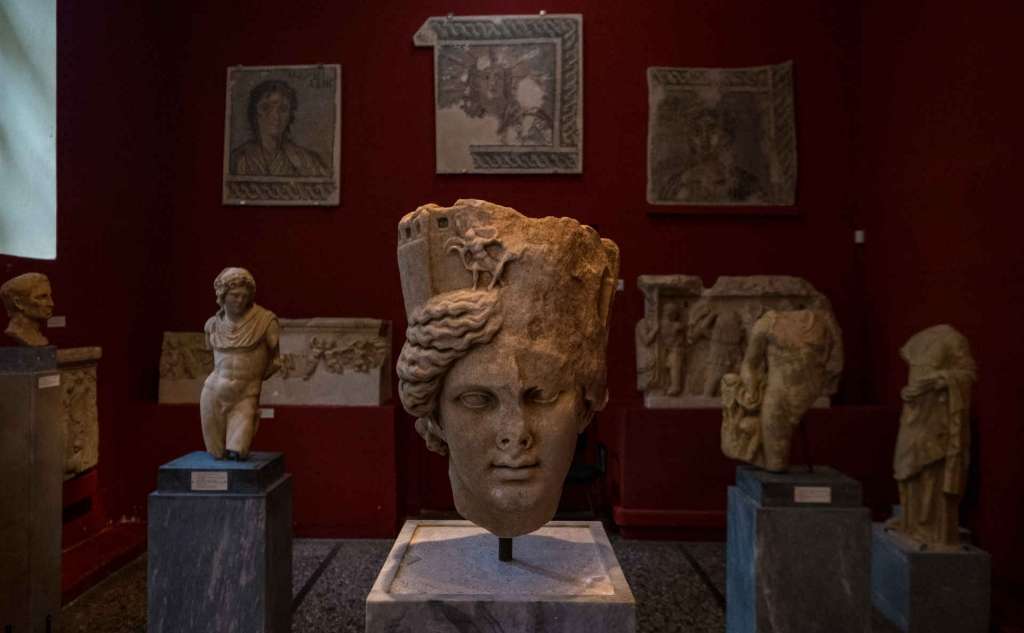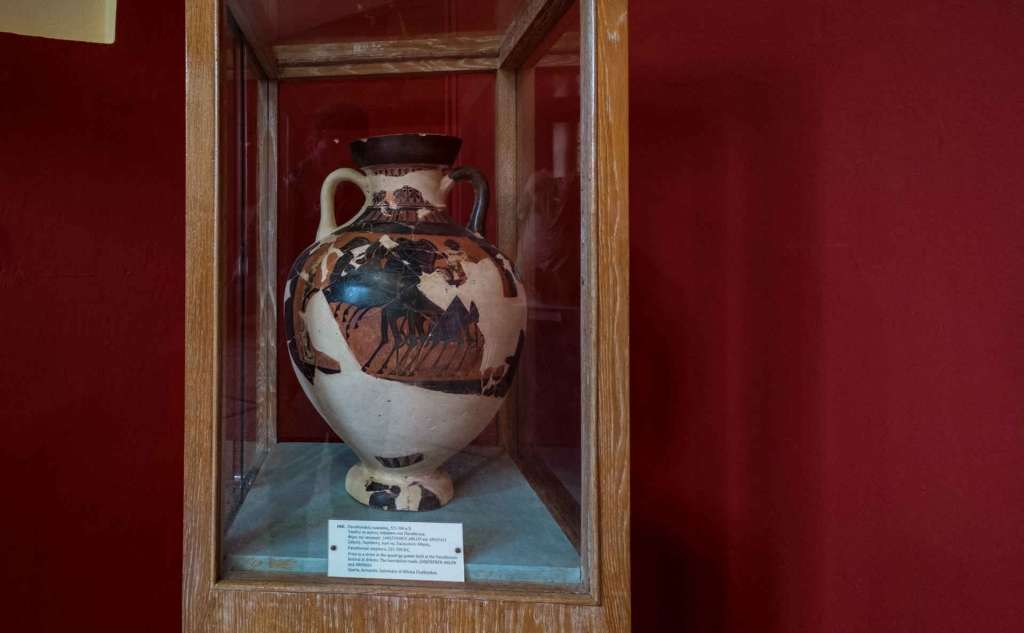Archaeological Museum - Sparta
The Archaeological Museum of Sparta hosts thousands of findings from various areas of the Laconian prefecture, which cover the period between the Neolithic and the Late Roman eras. The Museum consists of seven rooms (of about 500 sq.m.), with the findings from the great sanctuaries of Sparta being the ones holding the most prominent position.
Romantic foreign travellers recorded the antiquities dispersed in Sparta's broader area during the 19th century, and the first Archaeological Collection was founded in 1833 by the German archaeologist Ludwig Ross. The collection was housed in the church of Saint Panteleimon and soon was destroyed by fire. In 1872 it was rebuilt, and the 288 ancient objects comprised the central core of the findings of the Museum. The Archaeological Museum was constructed in 1874 and was completed two years later, in 1876. During the 1950s, important maintenance work took place on the building.
In Room I (lobby), Roman inscribed columns are exhibited, on which iron sickles have been embodied, offerings of the winners in the athletic events of the Artemis "Orthia" shrine. The winners' names and the athletic events they distinguished are inscribed on the columns.
In Room II, there are findings from the sanctuary of Artemis “Orthia”, such as samples of offerings to the goddess, made of ivory, clay and stone, as well as lead figurines which were the offerings of the poor (with depictions of gods, warriors, animals and plants). The clay masks (probably imitations of the wooden ones) used at ceremonies honouring the goddess) are of great interest. In the same room, there are also the great funeral amphorae with relief decorations found in the Sparta excavations exhibited, together with findings from the sanctuaries of Athena “Chalkioikos” and Apollo of Amyclae.
In Room III, the visitor may see sculptures, mainly from the Roman period, portraits and parts of marble sarcophagi. In the centre of the room, there is the head of the statue of Tyche (“Fortune”) of the city (a personification of Sparta). In the same room, the visitor may also admire parts of Hellenistic and Roman mosaic floors and the clay replica of a quinquereme (an ancient galley) from the Cape of Maleas.
In Room IV (the Museum’s small loft), there are findings of the Prehistoric period from various parts of Laconia, such as Geraki, Peristeri, Aggelona etc. Of great importance are also the findings of the Mycenaean tombs of Pellana.
In Room V, mosaic floors that decorated the luxury urban villas and the public buildings of Sparta during the Roman period are displayed. Among them, the iconic representations of Achilleas at Skyros (early 4th century A.D.) and that of the beheading of Medusa (3rd century A.D.) stand out.
In Room VI, the architectural parts of the Apollo of Amyklae sanctuary, a work by Bathycles of Minor Asia, are of great significance. This temple combined both Ionian and Doric features in a beautiful way. A pyramid-shaped column in the centre of the room depicts pairs of figures (Orestes- Clytemnestra, Menelaus-Helen).
In Room VII, there are samples of, mainly, the Laconian sculpture. In the centre, the figure of the Spartan warrior called Leonidas stands, as well as the statue of Eileithyia, goddess of childbirth, and the gigantic head of Hera or Helen.
| MONDAY | 08:30 - 15:00 |
| TUESDAY | CLOSED |
| WEDNESDAY | 08:30 - 15:00 |
| THURSDAY | 08:30 - 15:00 |
| FRIDAY | 08:30 - 15:00 |
| SATURDAY | 08:30 - 15:00 |
| SUNDAY | 08:30 - 15:00 |




